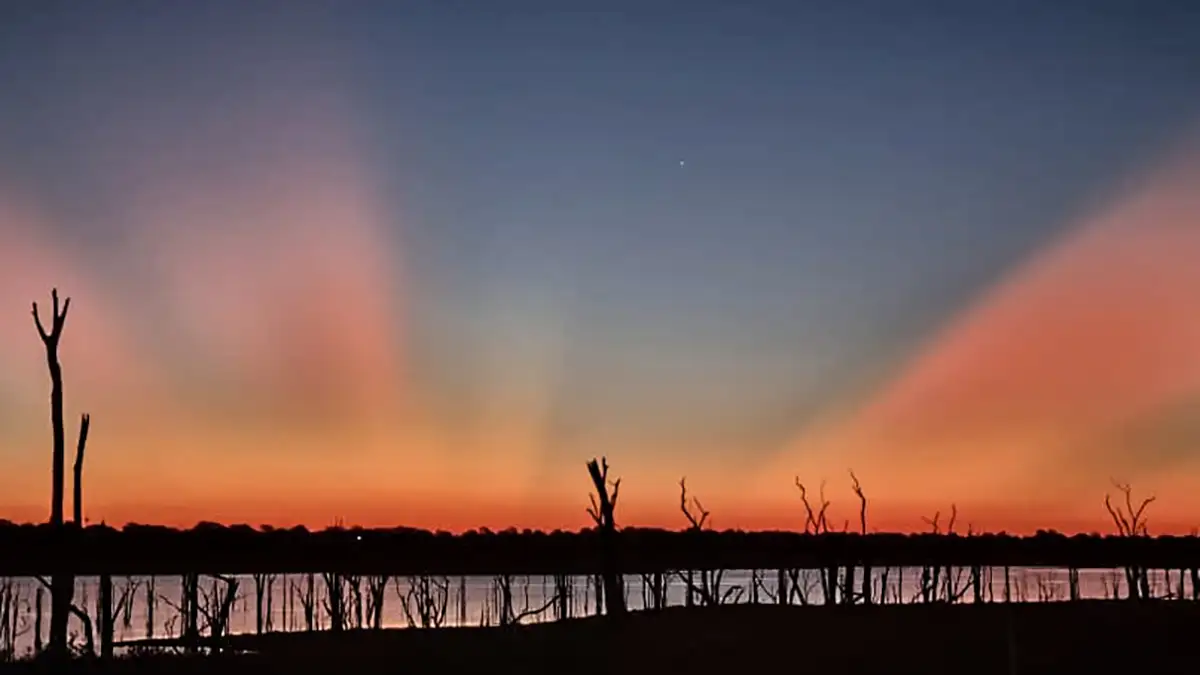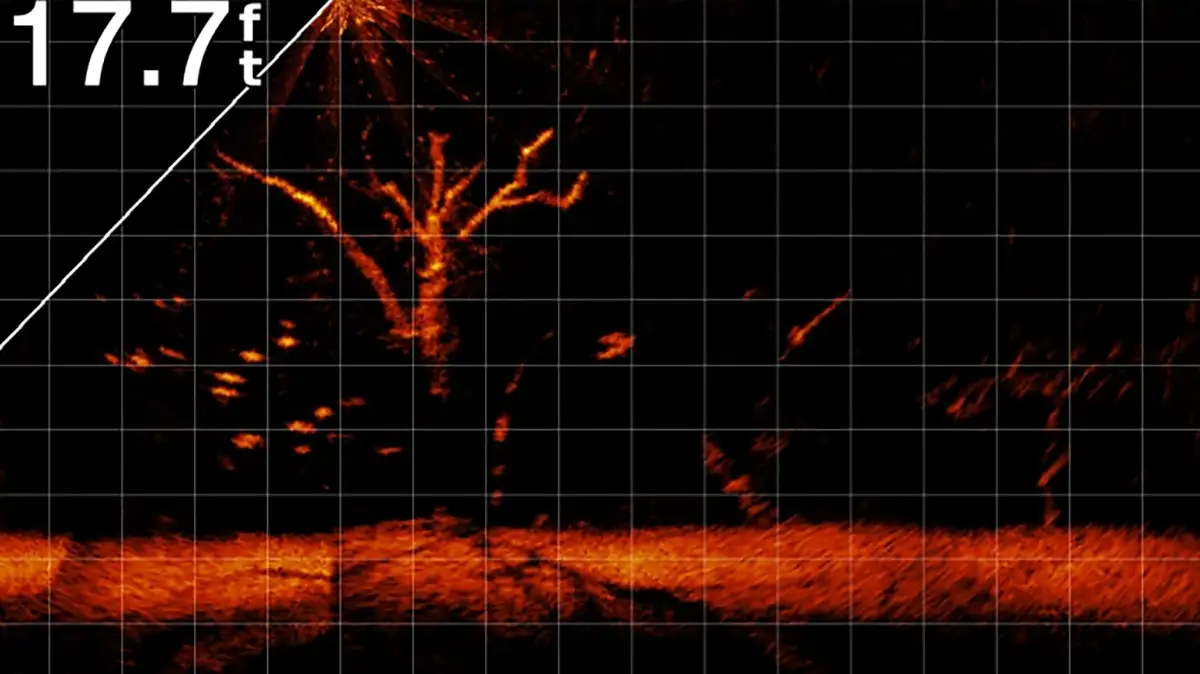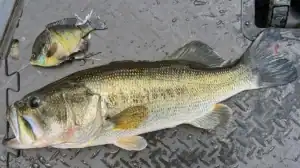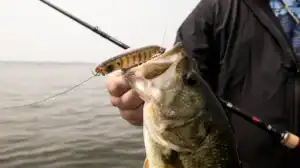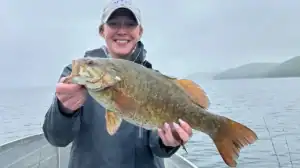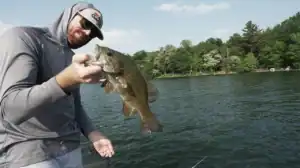Standing timber is present in lakes all across the country. This type of cover is extremely common and holds fish nation wide. While standing timber can be overwhelming to fish due to its expansive nature, it can be extremely productive at certain times of the year.
Here on the lower Chattahoochee River, our lakes are full of spotted bass and standing timber. On lakes such as West Point and Eufaula, standing timber covers the majority of the lake bottom. This can make fishing difficult due to the volume of cover. In order to effectively dissect this cover, it is important to understand why, when and where to fish standing timber.
WHY DO BASS LIKE STANDING TIMBER
Standing timber is a great place to target nearly any species of freshwater fish. This is especially true for spotted bass. Standing timber often holds the majority of baitfish in these bodies of water. This is also the only type of cover present in deep water areas that cover the majority of the water column.
These trees provide the perfect location for baitfish wanting to suspend in the middle of the water column. This timber allows for fish to sit at their desired depth, and still be surrounded by cover to protect them from other predatory fish. This presence of baitfish is often what’s responsible for the high number of bass that reside in this type of cover.
Outside of the spawn, spotted bass tend to relate to baitfish almost year round. This is the main reason standing timber can be so productive during certain times of the year. These fish will suspend on timber in search of bait and other types of forage using these trees as cover. These fish also receive far less fishing pressure as opposed to ones in isolated locations such as brush piles or laydowns. This open water also allows fish to reload, making it much more consistent as opposed to fishing areas with a limited number of fish.
WHEN IS STANDING TIMBER PRODUCTIVE
While standing timber can be productive year round, there are certain times of the year where it really shines. My favorite time to fish this type of cover is during the summer to fall transition. Spotted bass tend to leave their deeper summer haunts in search of baitfish to feed on before winter hits. This is when fishing timber can be extremely productive.
Once the water temperature starts to drop, the fish become aware of a quickly approaching winter. This is when fish like to feed up in preparation for cold water temperatures.This is commonly known as the fall feeding period where fish are strictly keyed in on baitfish. This is the perfect time of year to target spotted bass in standing timber.
The biggest factor in deciding when to fish standing timber is the presence of baitfish. This is when I like to use my electronics in order to locate congregations of baitfish. I like to start by idling around using down and side imaging to quickly locate groups of bait. Once I have located bait on side or down imaging, I will drop my trolling motor and use live sonar to locate specific bass targeting these bait balls.
HOW TO FIND THE BEST STANDING TIMBER
Fishing standing timber is often extremely overwhelming due to the large amount of timber present in most bodies of water. This is why it is important to understand what areas within these fields of timber are productive. The two most important things to look for when dissecting a field of standing timber are bait and contour changes.
Changes in contour, such as ledges or humps, are a great place to target when looking for productive standing timber. In these areas, the timber will often stick up higher in the water column as opposed to timber in the main channel. This is the perfect location for bass to hold on while in search of their next meal. Looking for things that stick out is the best way to find fish in an expansive field of timber. This can be anything from a high spot, to a tree that has more branches than the others. Fish like to hold on these irregularities which makes them great high percentage areas to get bit.
LIVE SONAR
Using your live sonar is one of the easiest and most efficient ways to target these bass. There are tons of different types of fish that reside in standing timber. Anything from striped bass to crappie can be found swimming around in this type of cover, so it is important to be able to tell the difference using your live sonar.
The easiest way to distinguish what species of fish you are looking at is through size and behavior. Bass tend to be far more solitary than striper or crappie. Oftentimes you will see them by themselves or in small groups of 2 to 3 fish. Striper and crappie on the other hand typically travel in much larger groups, which makes them easy to distinguish. They also have a much different return on live sonar due to their differing sizes. Once you understand what a bass looks like on live sonar, you will be much more efficient targeting fish in this type of cover.
I also like to look for fish that are either suspended high up in the water column or chasing bait. These are typically the most active fish in the area and will be the easiest to coax into biting. You can still catch bass that are positioned deeper in the water column, however these fish are oftentimes less active and harder to get to bite.
Once you’ve located an area with feeding bass, it is important to troll around panning the area for active fish. I will oftentimes not cast until I see a fish that is positioned to feed. This means a lot of my time is spent trolling around a specific area using my live sonar to look for specific fish This is a super effective way to catch fish using standing timber as an ambush point.
WHAT LURES TO USE
When fishing for bass in flooded timber, I generally stick with shad imitation baits. Typically fish are positioned in flood timber for the purpose of feeding on baitfish, because of this I like to stick with three basic shad imitations. My three go to lures for this scenario are a swimbait, jerkbait, and an Alabama-rig.
A swimbait has always been my year-round go-to for fishing standing timber. This is a great lure for targeting specific fish by putting the swimbait right in front of their face using live sonar. I like to use differing sizes depending on the size of bait they are feeding on. This lure works throughout the entire year and is always a good choice when fishing these types of scenarios. Recently, my go to swimbait for this application is the Rapala Crush City Mayor with a Berkley Fusion 19 Swimbait Head.
Another lure I really enjoy throwing around standing timber is a jerkbait. This lure has much more drawing power than a swimbait, and is great for calling fish up out of the standing timber. I typically use a jerkbait when fish aren’t as active and are positioned deeper in the trees. I like to throw a jerkbait on light line and let it sink to right above the tree line. I fish this bait by employing a mix of erratic jerks and pauses while watching how the fish react on live sonar. My go to jerkbait for this application is the Megabass Ito Vision 110.
Lastly I like to throw an Alabama rig. This lure is perfect for generating reaction bites once the water has cooled off. I like to employ this bait once water temperatures drop and fish become more sluggish. I will cast this lure at specific fish and rip it past their face at in increased speed to generate a reaction strike. My go to Alabama rig is the 6th Sense Divine Umbrella Rig with 3.3-inch swimbaits. This is the perfect lure for imitating groups of baitfish using standing timber as protection from other predatory fish.
Fishing standing timber throughout the late summer into the early winter is a great way to catch a ton of fish feeding up before the dead of winter. This is especially true in spotted bass fisheries where fish love to suspend on bait. If you are looking for a way to catch unpressured fish throughout the fall transition, fishing standing timber with live sonar is a great way to do it.


